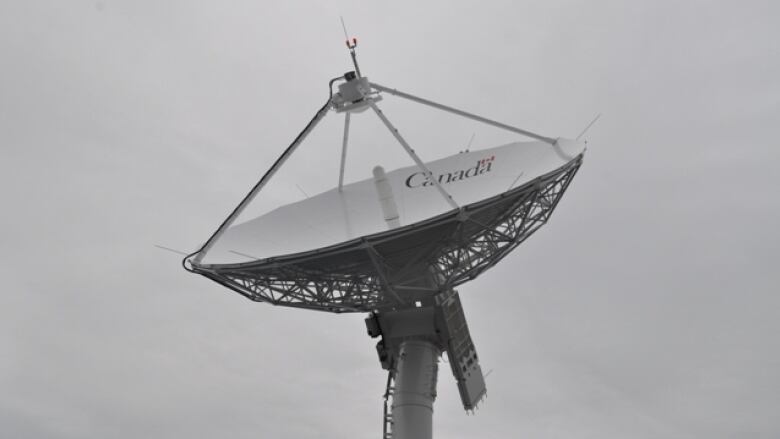Canada announces first satellite antenna in Inuvik
Inuvik's satellite station prepares for expansion; Canadian antenna joins two others from Germany and Sweden

The Canadian government launched its first satellite antenna in Inuvik, N.W.T., Thursdaynight.
In addition to the launch of the antenna, the government also announced $3.7 million in funding to be put towards roads and access to the Inuvik Satellite Station Facility (ISSF).
The antenna13 metres in diameter was installed earlier this year, but had to undergo tests to ensure it functioned.
"It is ready to go," said Stuart Salter, who is a consultant on the project.
The antenna, which will collect data on forest fires, ice conditions and shipping traffic, joins two others in the town from Germany and Sweden.
Located above the Arctic Circle, "the Inuvik satellite station is uniquely positioned to track and receive data in real-time from polar-orbiting satellites for scientific, mapping, weather, surveillance and other purposes," according to Natural Resources Canada.
Making room for more
Salter says there is interest from other countries to build satellite antennas in Inuvik, including from the Swedish Space Agency. Part of the project has already been constructed in Los Angeles, and it will be moved up to the town in the next two months.
There will also be a fifth antenna installed next year.
There is little room for more satellite antennas in the current area, which Salter calls "phase one," and the $3.7 million put towards the roads will help expand the ISSF into "phase two" to accommodate more satellites.
"[The phase two road expansion] increases the capacity by another 200 per cent with respect to the antennas," Salter said.
The expansion can accommodate 10 other antennas, paving the way for the ISSF to become a world-renowned satellite station.
Each satellite antenna costs around $7 million, and Salter says about $3 million stays in the town of Inuvik. Much of the construction is done locally, keeping the money in the local economy.
"It's a really good deal for Inuvik," he said.












_(720p).jpg)


 OFFICIAL HD MUSIC VIDEO.jpg)
.jpg)



























































































